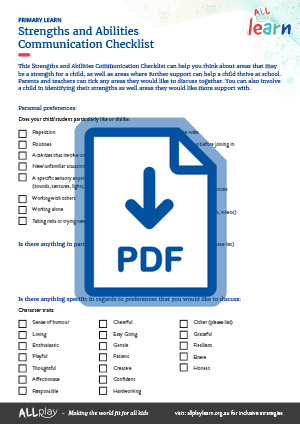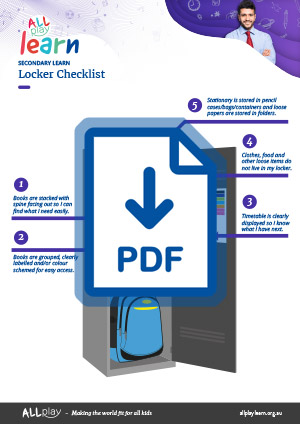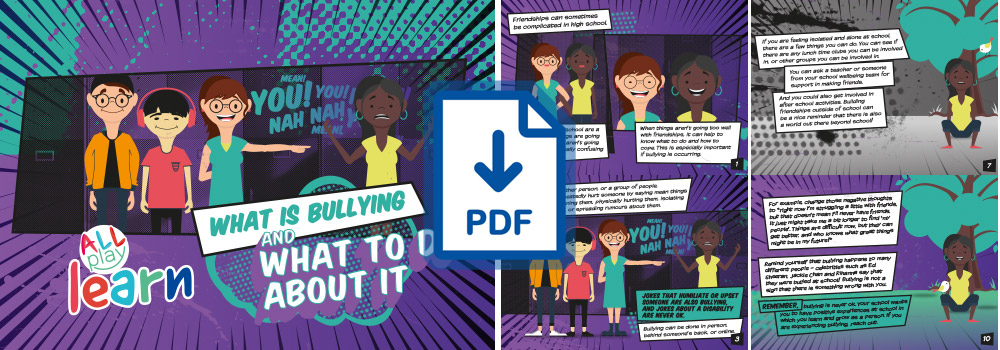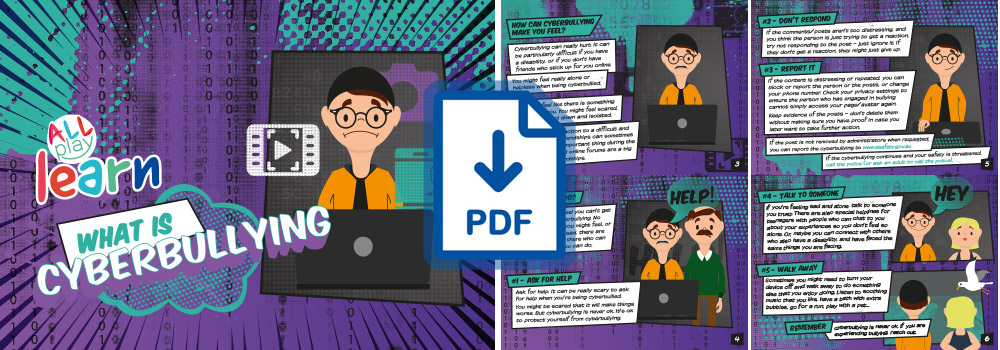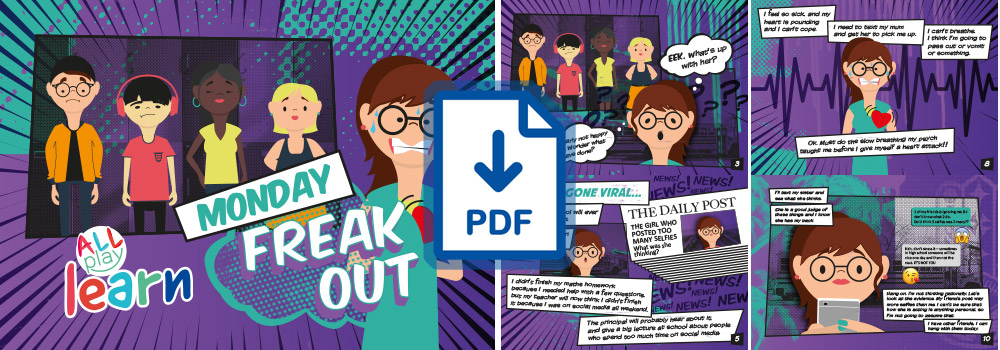
Specific Learning Disability
On this page:

About specific learning disability
Teenagers with a specific learning disability find a specific area of learning very challenging, such as reading, spelling, handwriting or mathematics, but can do well in other areas of learning. They may even excel in other areas of learning. Teens with specific learning disabilities often have other developmental disorders too, such as ADHD. A teenager can have more than one specific learning disability. You can learn more about specific learning disabilities below.
Teenagers with a reading disability, which is also known as dyslexia, typically have trouble recognising words. They can find it difficult to ‘sound out’ and blend the sounds in a word. This can make it difficult for them to understand things that are written or spell words correctly. They may find it hard to connect speech sounds with written letters or words.
A teenager with a writing disability may write slowly and have trouble drawing letters. They may have challenges with grammar and vocabulary, and they may misspell words. They may find it hard to organise their ideas, or to write a creative or logical piece.
Mathematics disabilities look different from student to student. Some teenagers may struggle to calculate basic sums in their head or remember basic number facts. Others may find more complex and abstract problems difficult to understand.

Strengths
What might be some strengths?
- Teenagers with specific learning disabilities may do well in, and even excel in, other areas of their learning.
- Teenagers with a reading disability may be good at nonverbal tasks. They may be particularly good with visual-spatial skills (ability to mentally picture and move images).
- Teenagers with a reading disability may have a good understanding of information taught out loud or using images.
Where might you provide support?
- Students with specific learning disabilities may take longer to learn new information in a specific area of learning. They may need extra help in the area of learning they find difficult.
- Teenagers with a reading disability may find other subjects difficult if there is a lot of reading. This is because it can take them much longer to read the information, and they may not understand what they read.
- Some teenagers with a specific learning disability can need support with tasks where they need to remember lots of steps.
- Some students with a specific learning disability may find it difficult to find rhythms in music or text.
- Some students may find gross or fine motor tasks difficult.

Evidence-based strategies
Directly tackle underlying skills
Provide lots of opportunities to practise
Consider how you give instructions
Provide students with extra supports and strategies
- Target phonological skills. Some students may need extra help with learning phonemes (speech sounds), graphemes (letters that make up a sound such as ‘ph’), morphemes (smallest part of a word that means something, such as ‘cut’ in ‘cutting’) and orthography. For example, ask students to rearrange syllables to form a word, or write different word endings. The Literacy Teaching Toolkit on the Victorian State Government Education and Training website has more information on developing phonological awareness in children.
- Break target skills down. Sometimes a student may need a task broken down into smaller tasks. For example, when writing an essay, ask students with a reading or writing disability to identify the key parts of the essay question before they plan or write their essay.
- Students may need to practise a task lots of times. Consider giving students lots of time to practise. It may be helpful to give them lots of similar mathematics problems or have them read the same short story lots of times. For teenagers with reading disabilities, this is particularly helpful with a book that has lots of words that need decoding (words where the pronunciation is not easily predicted from the spelling).
- When a task is new, students will learn best with help. When possible, offer them help (i.e. prompts, demonstrations, encouragement). Gradually reduce this help as they become more capable. This can be provided by teachers, or if working in pairs or small groups, by other students.
- Choose computer programs or apps with care. Programs or apps for tablets that target skills such as handwriting, decoding words, spelling, reading rhythm and phonemes may help a student learn these skills. Programs which ‘do the work’ for the student (e.g. programs which read the story to the student) are helpful for activities where the focus is not on their reading (e.g. Integrated Studies) but may not be a helpful learning-to-read tool. When a student with a reading disability is practising reading, they will get better results trying to read words for themselves.
- Provide clear and explicit instructions. Consider giving clear and specific information to students. Break down target skills (e.g. help them identify key parts of an essay question) and identify the components of a problem (e.g. break down the steps needed to solve a maths problem).
- Model tasks and the underlying strategies or thinking. Students may learn more effectively if shown how to do a task. Consider talking out loud to demonstrate the strategies you use to problem solve when working on the task.
- Monitor and check understanding. Check if students have understood what they are learning. Consider checking student understanding and progress regularly.
- Use visual supports. Mathematics may be simpler for some students to learn when concrete, visual objects are used in demonstrations. Asking students to create semantic maps or graphic organisers may support students with a writing or reading disability.
- Teach students to self-monitor. Students can be taught to assess their own work. For example, give students with a writing disability a list of things to include in their work (e.g. five adjectives) and ask them to plan how they will do so. They can then assess whether they have successfully included that list of things in their work. Storyboards (drawings of the storyline) may help students plan.
- Actively use and teach meta-cognitive strategies. Meta-cognitive strategies help students to understand the way they best learn. Teaching students how to use strategies such as rehearsal (repeating), elaboration (paraphrasing and summarising), reading aloud, using mnemonics, visual supports or organisers (e.g. concept maps; taking notes), reading comprehension strategies such as self-questioning, and opportunities for learning reflections can all help students identify strategies to support their learning.

Best practice tips
- It can be helpful to teach a student with a mathematics disability a range of methods for solving mathematics problems. For example, to find 30% of $200, a student could either calculate 30/100 X 200, or calculate 10% of 200 and times that by 3.

Curriculum considerations
- Students with reading disabilities may need support with reading sheet music.
- Some students may find rhythm challenging. Providing extra time to practise rhythm-based activities can help a student in both music AND their reading!
- Students with a reading or writing disability will need support in this subject. A range of very relevant strategies are covered in the above ‘Evidence-based strategies’.
- Consider whether some tasks can be tailored so there is less written content for some literacy skills. For example, if assessing whether students understood a book read to the class, a student could create a visual PowerPoint presentation explaining the plotline.
- Some students with a specific learning disability may find coordination difficult.
- For any tasks involving written work, see the above ‘Evidence-based strategies’
- Students with a reading or writing disability may need written tasks to be tailored for their current reading level. Consider tailoring your approach to include teaching methods that don’t involve reading.
- Audio textbooks allow students to focus on learning the information they need to know.
- Students with a specific learning disability in reading or writing may find learning new phonetics challenging. If the new language uses a non-phonetic alphabet (i.e. Chinese characters) they may need extra support.
- Students with a reading or writing disability may need written tasks to be tailored for their current reading level. Consider tailoring your approach to include teaching methods that don’t involve reading.
- Audio textbooks allow students to focus on learning the information they need to know.
- Teenagers with a mathematics disability will need support with this subject. A range of very relevant strategies are covered in the above ‘Evidence-based strategies’.
- Students with a reading or writing disability may need written tasks to be tailored for their current reading level. Consider tailoring your approach to include teaching methods that don’t involve reading.
- Audio textbooks allow students to focus on learning the information they need to know.
- Students with a reading or writing disability may need written tasks to be tailored for their current reading level. Consider tailoring your approach to include teaching methods that don’t involve reading.
- Audio textbooks allow students to focus on learning the information they need to know.
- Students with a reading or writing disability may need written tasks to be tailored for their current reading level. Consider tailoring your approach to include teaching methods that don’t involve reading.

Other considerations
Organisation
Behaviour
English as an additional language (EAL)
Friendships
Transitions
Other co-occurring conditions
- Some students with a reading disability may find locating the books they need for different subjects in their locker simpler if there are visual aids such as colour coding by subject.
- Some students might also show challenging behaviours. It’s important to remember students are most likely trying to communicate a need or want that is not being met.
- Refer to the ABC approach for more information on how to reduce challenging behaviour by supporting the young person and promoting more helpful behaviour, and our emotions page for more information about supporting a young person with managing their emotions.
- Students with a specific learning disability in reading or writing who are learning English as an additional language (EAL) may find it very challenging to learn to read or write.
- This may be even more challenging for students who have been taught reading or writing in a language that does not use a phonetic alphabet (i.e. Chinese characters).
- These students will require extra support and time.
- A teenager with a specific learning disability may need support with friendship dynamics and feeling different.
- Access AllPlay Learn’s stories What is bullying and what to do about it, What is cyberbullying, and Monday freak out under relevant resources below, or access the audio versions of these stories here
- For more information about supporting students with disabilities when transitioning across education settings, access AllPlay Learn's transition page.
- Post-school transition to adult life should begin as early as possible in school.
- Aim to increase independence by working on organisational, social and problem-solving skills, and time- and self- management skills. Provide plenty of opportunities to practise them across a range of contexts.
- It may be helpful to identify skill gaps and develop a support plan to help them be successful (e.g. social skills, academic and/or employment skills).
- Some students with a specific learning disability may also experience Attention-Deficit/Hyperactivity Disorder (ADHD), difficulties with hearing or anxiety.
- Refer to information about these areas to help support the student.

Relevant resources
Visit our resources page for a range of resources that can help to create inclusive education environments for students with disabilities and developmental challenges. Some particularly relevant resources for students with specific learning disabilities include:

